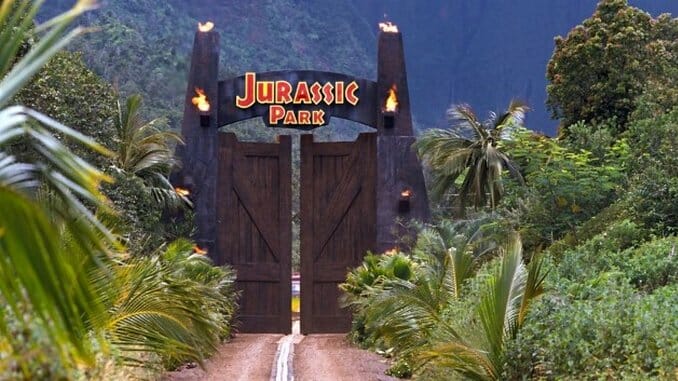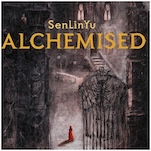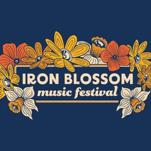On the Populist Genius of Jurassic Park, the Greatest Blockbuster of the ’90s

Jurassic Park is a great film, by just about any estimation one can use to judge such things. It’s thrilling as an action epic, a prescient sci-fi premise, and as a special effects spectacular that modernized (and yes, “evolved”) the entire industry by quantum leaps in the early ’90s. Its influence was pervasive, from the obvious copies (looking at you, Carnosaur) that quickly flooded the home video market to the general ballooning of blockbuster film FX budgets, which were suddenly being held to much higher standards by filmgoers. Let’s just say that in the years after Jurassic Park, you could no longer get away with putting out “Billy and the Cloneasaurus,” in any format.
But Jurassic Park isn’t just a pinnacle of ’90s popcorn entertainment. It’s also an incredible blueprint for the art of populist filmmaking—making films that effectively and effortlessly appeal to a wide audience and work partially outside of that audience’s understanding to give them all the information they need to get the most out of the viewing experience. Because it does this so well, Jurassic Park is both instantly accessible and surprisingly deep upon more detailed inspection. It can be enjoyed just as thoroughly by a student of film as it can by a 10-year-old kid in a T-Rex t-shirt, and that’s because the 10-year-old has been given tools he’s not even aware of that are intended to boost his enjoyment. Those tools are some of the building blocks of filmmaking. So let’s talk about a few.
Jurassic Park and the art of foreshadowing
Steven Spielberg, along with screenwriters Michael Crichton and David Koepp, do a masterful job of hinting at future events throughout Jurassic Park in ways that are both obvious and subtle. Perhaps it helped that Crichton was the author of the novel and had the surest grasp of its themes, but the instances of foreshadowing they include in the film go a long way toward boosting its “rewatchability,” rewarding second and third viewings.
The most unmistakable instance of foreshadowing in the film happens early on, during our first introduction to protagonist/super paleontologist Dr. Alan Grant. Confronted with the world’s most annoying, portly ’90s child, our favorite safari hat-wearing paleontologist lays into his delicate psyche with surgical precision, detailing exactly how he would be stalked and subsequently disemboweled by a pack of Velociraptors working in tandem. The attack, he tells the now-quivering child, won’t come from the raptor he sees in front of him, but from the sides, from the other raptors “you didn’t even know were there.”
This is of course exactly how we later witness the death of anti-raptor advocate Robert Muldoon, the park’s game warden—the exact hunting strategy described by Grant. It also serves to give credit to Grant’s dinosaur expertise, given that he’s ultimately more successful at predicting raptor behavior simply from his research on the fossil record than men who have physically studied raptor behavior in the flesh inside their enclosures. Grant’s knowledge implies that he wouldn’t have been taken by surprise with the same raptor ploy.
A far more subtle instance of foreshadowing is present in the helicopter riding sequence, in which the main characters arrive on Isla Nublar. Fighting choppy updrafts, Hammond instructs the riders to all put on their seatbelts, but Grant faces an impasse. Due to some kind of design flaw, his seat presents him only with two “receiving” ends of the seatbelt, rather than two corresponding pieces that naturally fit together. Cleverly, he jury rigs a solution by tying the two parts of the belt together in a knot, before smiling at Ellie, clearly proud of his little display of resourcefulness.
This entire sequence is a beautiful visual metaphor for the phrase Jeff Goldblum eventually coins as the mantra of the entire Jurassic Park and Jurassic World franchise: “Life finds a way.” Consider the fact that the two seatbelt ends Grant is presented with are the ends we refer to as “female.” Later, as the characters explore the dinosaur breeding lab, Dr. Wu explains the park’s chief tactic for population control—all of its animals are female, and thus can’t breed. But as we know, the amphibian DNA used to fill in the genetic gaps in the dinosaur’s DNA allows for some species to spontaneously switch genders, which eventually leads to a breeding population. Thus, Grant’s seatbelt confusion foreshadows exactly what will happen on the island. It’s yet another symbol of man’s hubris—we introduce errors into our design, thinking ourselves infallible creators, but our arrogance is exposed by the complexity of the natural world. Life finds a way, even if it’s a crude one.
-

-

-

-

-

-

-

-

-

-

-

-

-

-

-

-

-

-

-

-

-

-

-

-

-

-

-

-

-

-

-

-

-

-

-

-

-

-

-

-








































